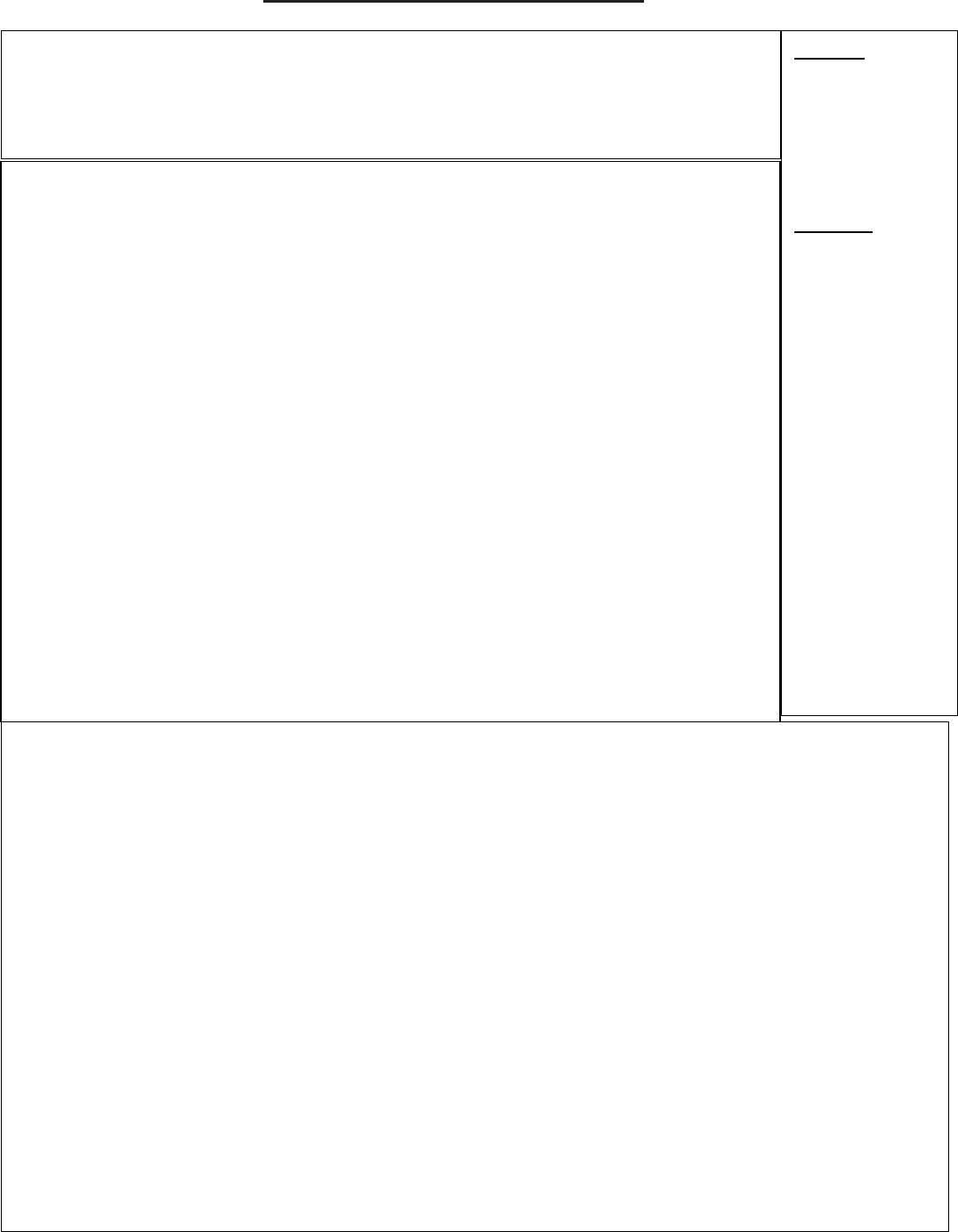
NCSEF Official Abstract Form
Title:
Student Name(s):
School Name, City, State:
Abstract Body:
Division:
Elementary ___
Junior ___
Senior ___
Category:
Elementary ___
Biological
Science A ___
Biological
Science B ___
Chemistry ___
Earth &
Environmental ___
Physics &
Astronomy ___
Technology
& Engineering ___
1. As a part of this research project, the student directly handled, manipulated, or interacted with (check ALL that
apply):
___ Human Subjects ___ Potentially hazardous biological agents ___ Tissue
___ Vertebrate animals ___ Microorganisms ___ rDNA
2. This abstract describes only procedures performed by me/us, reflects my/our own independent research, and
represents one year’s work only. ___ Yes ___ No
3. I/’we worked or used equipment in a regulated research institution or industrial setting: ___ Yes ___ No
4. This project is a continuation of previous research. ___ Yes ___ No
5. My display board includes non-published photographs/visual depictions of humans (other than myself):
___ Yes ___ No
6. I/we hereby certify that the abstract and responses to the above statements are correct and properly reflect
my/our own work. ___ Yes ___ No
This stamp attests that this project has received the final clearance by the NCSEF Scientific Review Committee.
Save As
Print

COMPLETING THE ABSTRACT:
Abstracts are limited
to
a maximum 250 words and
must
fit within the
predefined
area.
The
abstract should
include
the
f
ollo
wing:
a) purpose
of
the
e
xperimen
t
b)
pr
ocedur
e
c)
da
ta
d)
c
onclusions
It may also include any possible
research
applications.
Only minimal
reference to
previous work may
be
included. An
abstract must not
include
the
f
ollo
wing
:
a)
acknowledgments
(including naming the research institution and/or
mentor
with which
y
ou
were working), or
self-promotions
and external
endorsemen
ts
b) work or procedures done by the
men
t
or
COMPLETING THE
CERTIFICATION:
A
t
the
bottom
of the Abstract
&
Certification form
there
are six questions. Read each carefully and
answ
er
appropriately. The State NCSEF Scientific Research
C
ommittee
will
review and approve the
abstract and
answers to
the
ques
tions.
You will receive a certified copy of the abstract to post at your project. You may want to make copies of your
copy to distribute at the Fair.
TIPS
ON WRITING
A
PROJECT
ABSTRACT
A
project
abstract
is a brief paragraph or two (limited
to
250 words or 1,800
characters)
highlighting
and/
or summarizing the major points or
most
importan
t
ideas about your project. An
abstract
allows
judges
t
o
quickly
determine
the
nature
and scope of a
project.
• Emphasize
these
aspects: purpose (hypothesis), methods (procedures used), data summary
or
analysis, and
c
onclusions.
• Focus only on the
current
year’s
r
esear
ch.
• Omit details and discussions.
• Use the
past tense
when describing
what
was done.
Ho
w
e
v
er
,
where
appropriate
use active
v
erbs
rather
than passive
v
erbs.
• Use short
sentences,
but vary
sentence
s
tructur
e.
• Use complete
sentences.
Don’t
abbreviate
by omitting articles or other small words in order
t
o
save
space.
•
Avoid
jargon and use
appropriate
scientific
language.
• Use concise syntax, correct spelling,
grammar
,
and
punctua
tion.
AVOID
A REWRITE
• Focus on
what
you did,
not
on the work of your
mentor
or of the
labor
a
t
ory
in which you did your
w
ork.
• Do
NOT
include
acknowledgements,
self promotion or
external endorsements.
Don’t
name
the
research
institution and/or
mentor
with which you were working and avoid mentioning awards
or
honors
(including
achieving a
patent)
in the body of the
abs
tr
act.
• Be sure
to
emphasize the
current
year’s research.
A
continuation project should only
make
a
brief mention of previous years’
research
(no more than a
sentence
or
tw
o).
